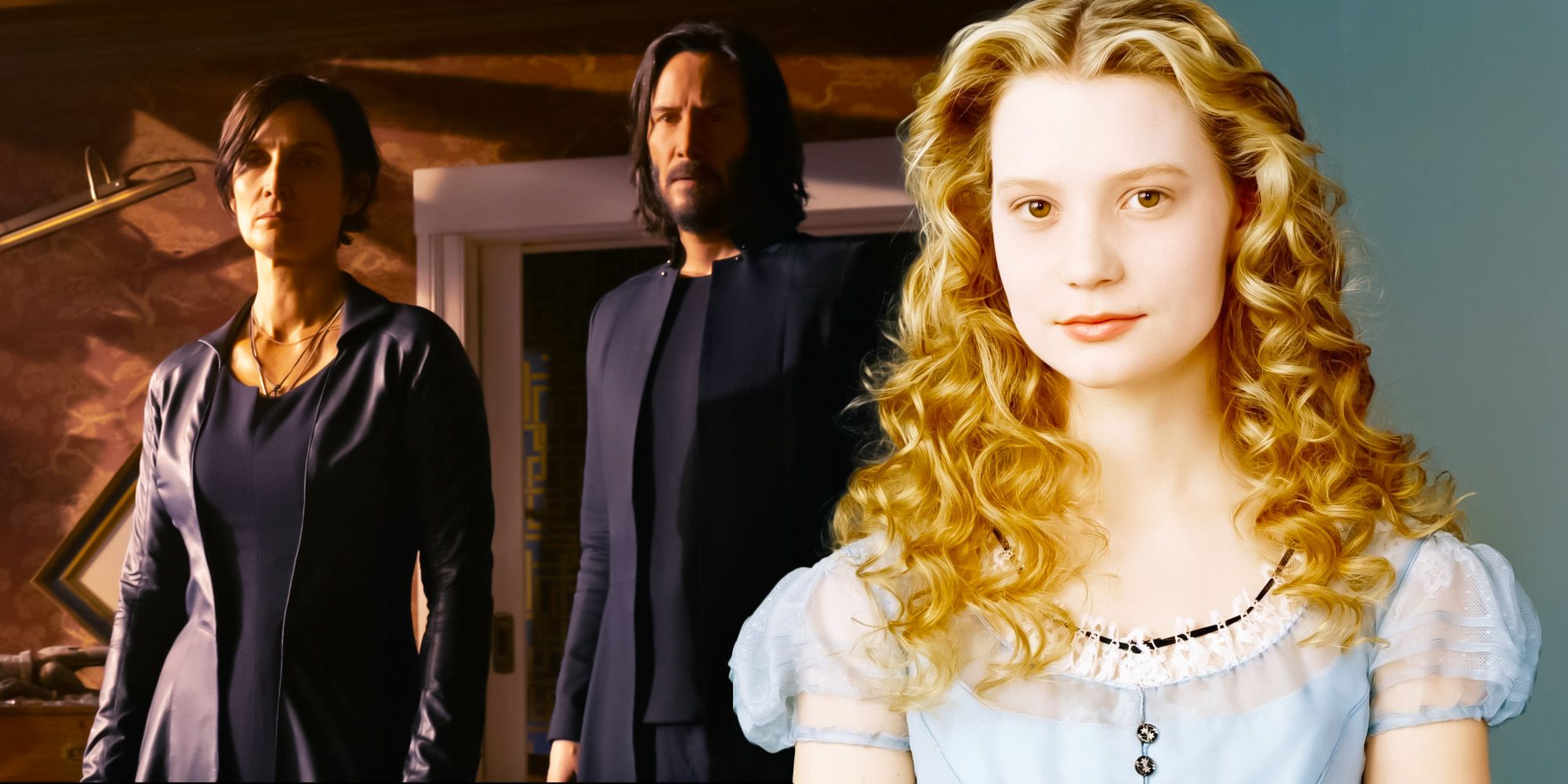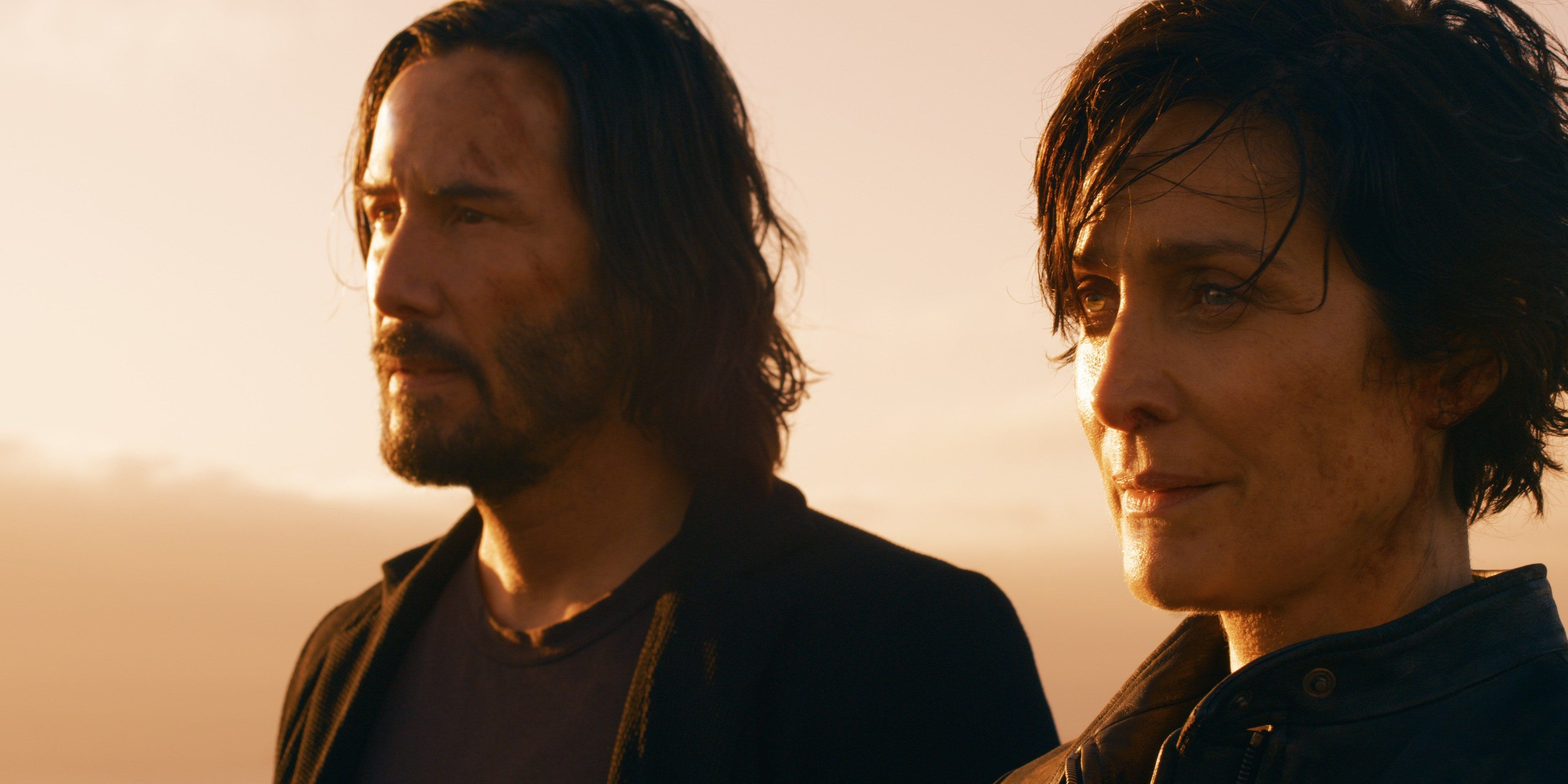The ending of The Matrix Resurrections perfectly matches the Alice in Wonderland inspirations of The Matrix franchise. Keanu Reeves returns as the Matrix-defying Neo in The Matrix Resurrections, now living the life of a video game designer with his old name of Thomas Anderson, and gradually awakening to the truth about the Matrix once more. In doing so, Neo also helps to restore the memory of his love, Trinity (Carrie-Anne Moss), who is also plugged back into the Matrix with the new identity of Tiffany.
After Neo and Trinity have fully regained their memories and Matrix-bending powers, with Trinity even gaining the ability to fly like Neo, the pair confront the Analyst (Neil Patrick Harris), revealing they will remain in the Matrix and remake it with their own shared vision. This syncs Resurrections up quite nicely with a line from Through The Looking-Glass, the sequel to Alice in Wonderland, specifically the line "Life, what is it but a dream?" For The Matrix franchise, this is fittingly meta on several levels.
The sci-fi action franchise of The Matrix movies has long been an existential journey, with the biggest question of all posited by Morpheus (Laurence Fishburne): "What is 'real'?" The Matrix itself might be a simulation of life on Earth before the war between man and machines, but it is certainly real for the programs and human minds inhabiting it. In a sense, the Matrix is both a dream and real, only tangibly existing in the brains of the humans plugged into it but a livable world within a world, nonetheless.
From the very beginning, Alice in Wonderland has been one of the major literary inspirations taken by the Wachowskis for The Matrix series. These began with the messages sent to Neo by Morpheus and his human freedom fighters of "Follow the White Rabbit." Later, Morpheus stresses to Neo the gravity of taking the Matrix's Red Pill, explaining that by doing so, Neo would "stay in Wonderland, and I show you how deep the rabbit hole goes."
The Matrix Resurrections also heavily played up the Alice in Wonderland themes of the franchise with Jefferson Airplane's "White Rabbit" in the trailer and in the film, along with Bugs (Jessica Henwick) acting as a personification of sorts of that basic idea. Neo and Trinity choosing to remain in the Matrix and remake it as they wish plays off Alice in Wonderland's role as one of many different sources drawn upon for The Matrix.
The Matrix might be a cyberspace Wonderland, the programmed reality of which can only be realized by taking the Red Pill. Still, Alice in Wonderland-like dream world or not, as long as one is inside of it, the Matrix very much fits the definition of "real." Neo and Trinity's ending in The Matrix Resurrections shows them proving this with their decision to remake the Matrix, able to do so because reality, as defined within the dream of the simulation, allows them to do so.


